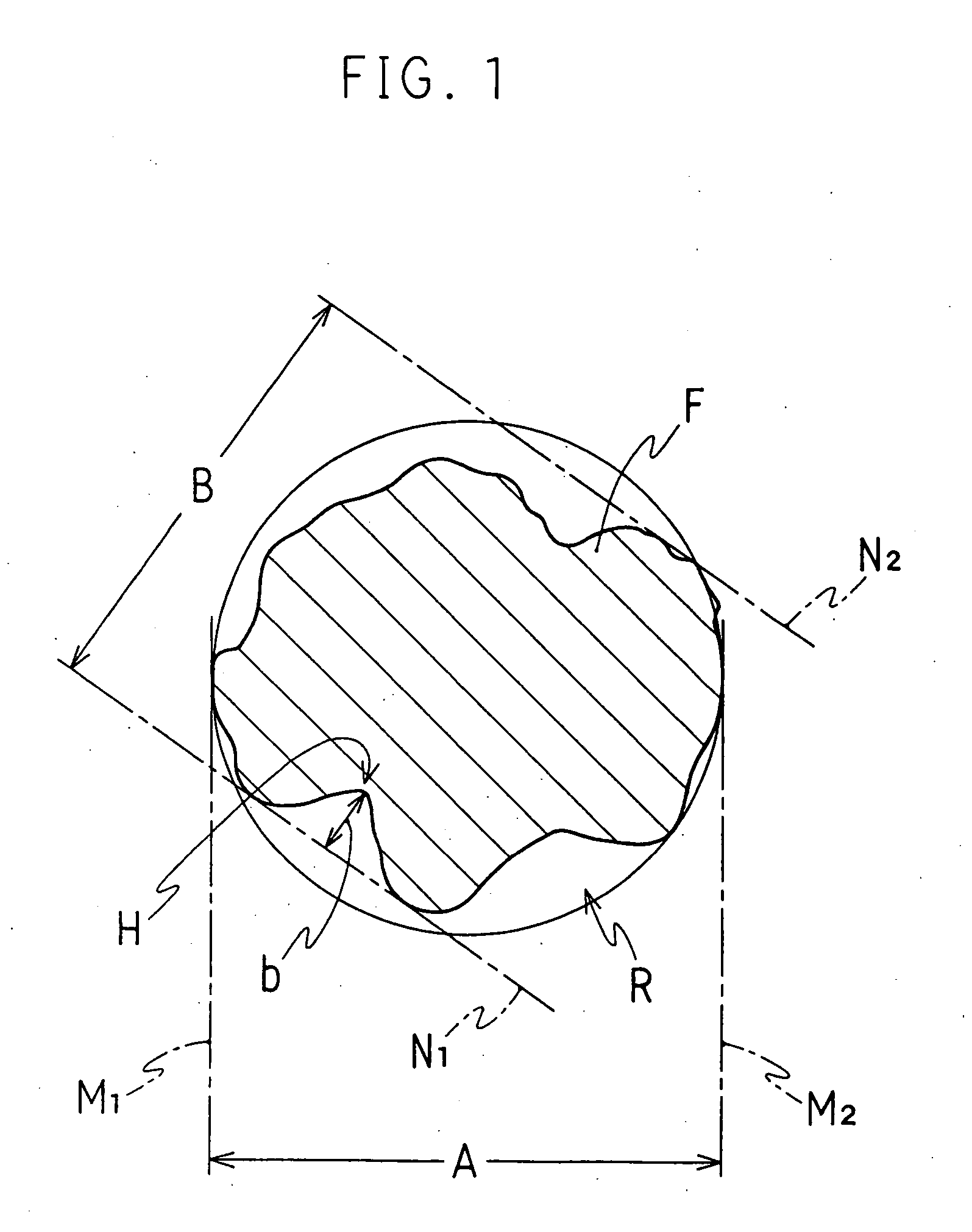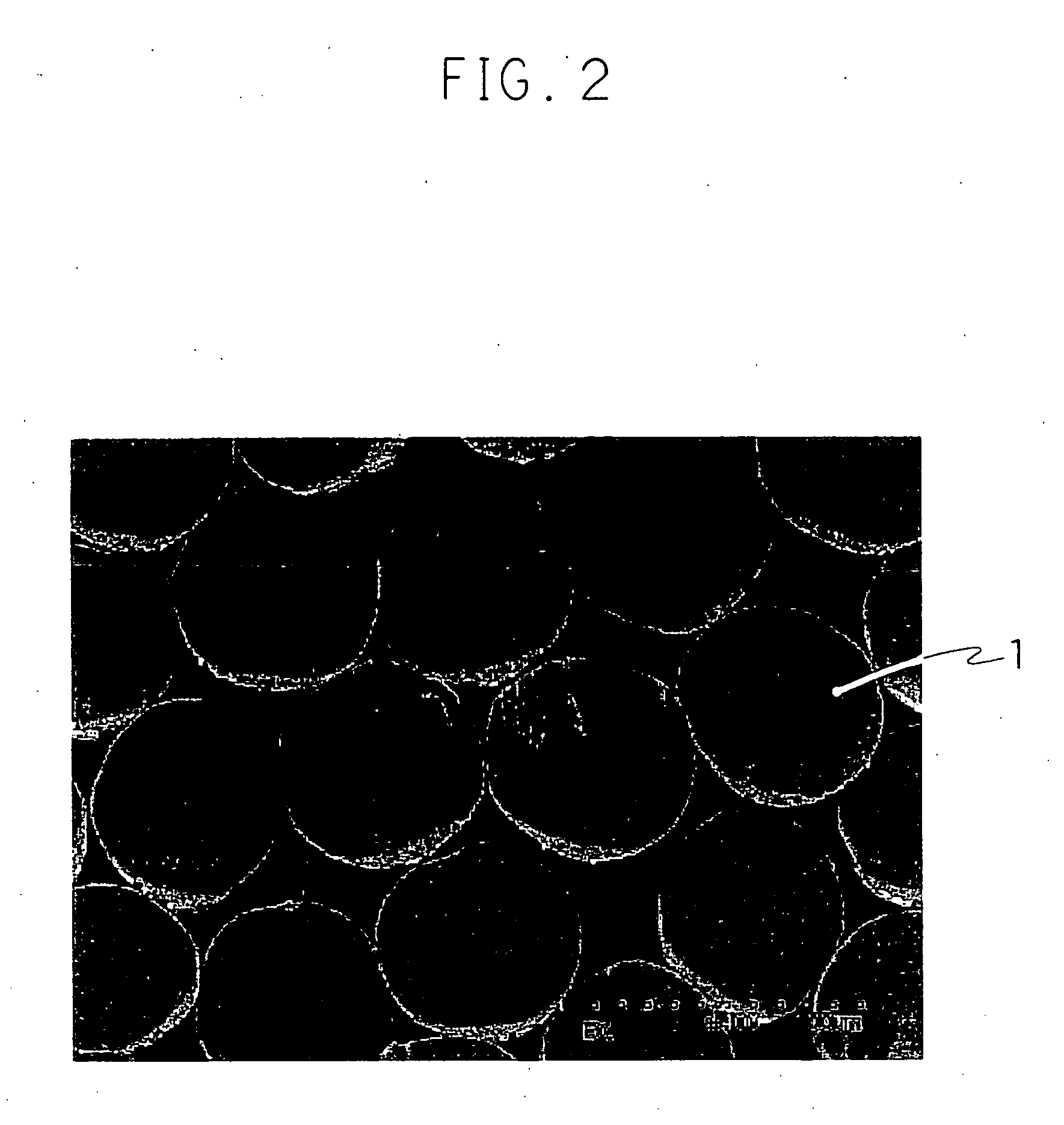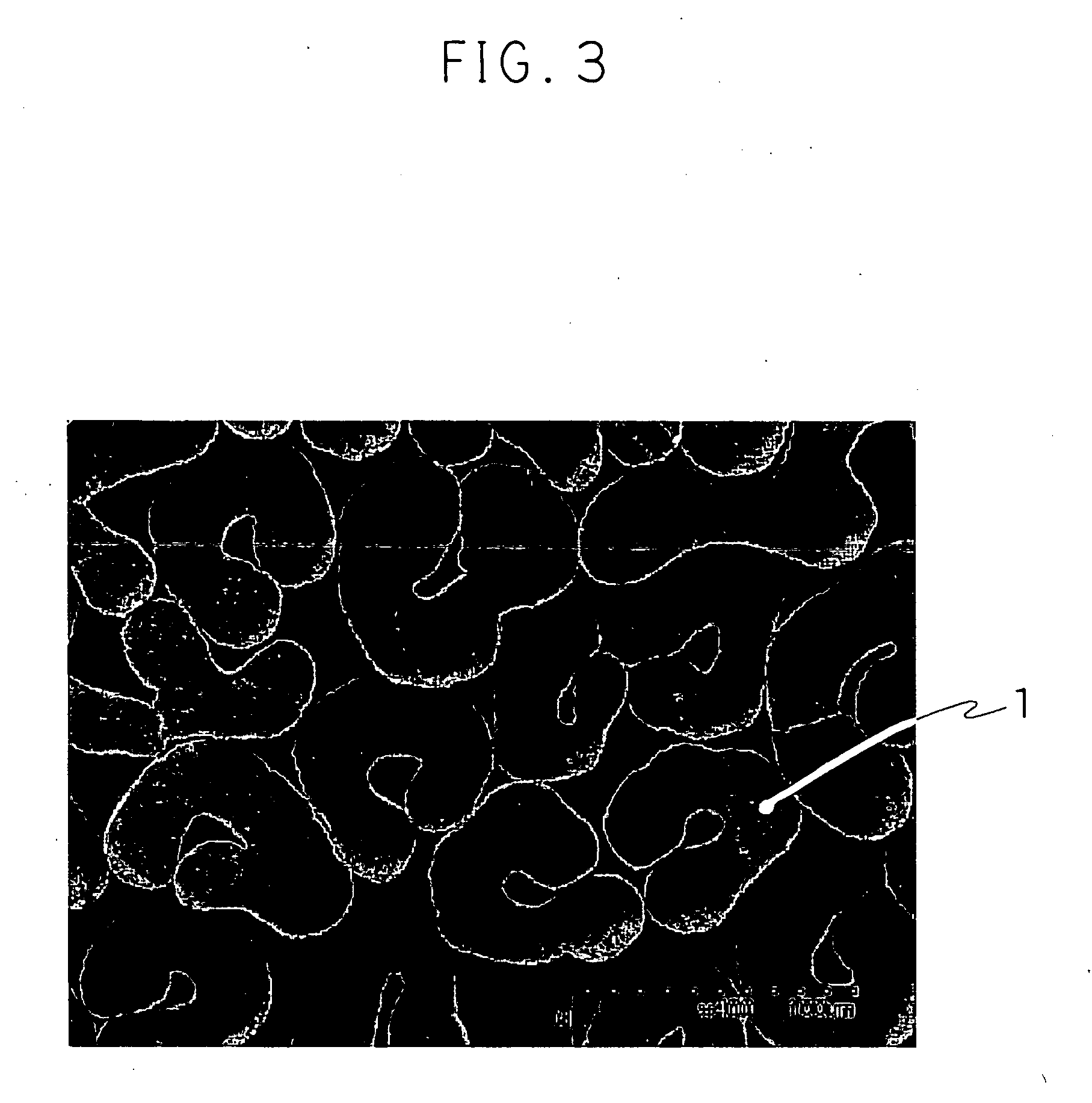Artificial hair and method for production thereof
a technology of artificial hair and hair, applied in the field of artificial hair, can solve the problems of poor poor dye-affinity and volume per weight unit, and difficulty in procuring materials and hair length, and achieve the effect of improving fiber gloss and improving the coagulation properties of polymers
- Summary
- Abstract
- Description
- Claims
- Application Information
AI Technical Summary
Benefits of technology
Problems solved by technology
Method used
Image
Examples
example 2
[0084] A copolymer comprising 57% of acrylonitrile, 40.8% of vinylidene chloride and 2.2% of 2-acrylamido-methylpropane sulfonic acid sodium salt was dissolved in DMF. 12 parts of water was added thereto based on 100 parts of the copolymer and the concentration was adjusted to 29% to obtain the spinning solution. The viscosity of the obtained spinning solution was 98 decipascal.multidot.second.
[0085] The obtained spinning solution was discharged through a spinneret (pore diameter 0.30 mm, pore number 112) into a 20.degree. C. coagulant bath containing a 58% concentration DMF aqueous solution. The fiber was introduced into a 45.degree. C. bath containing a 30% concentration DMF aqueous solution and drawn to 4 times and further drawn to 1.1 times in a 70.degree. C. bath containing a 15% concentration of DMF aqueous solution, making the total drawing ratio 4.4 times. Then, the fiber was washed and subjected to relaxation treatment of 9% with hot water of 90.degree. C. Further, an oil s...
example 3
[0090] The filament obtained in Example 2 which was subjected to relaxation treatment in a pressurized vapor atmosphere was maintained in a tension state and subjected to further relaxation of 1.6% in a hot air atmosphere of 190.degree. C., making the total relaxation ratio of relaxation treatment conducted in three times 30%. The obtained fiber had a fineness of 53 decitex, gloss contrast of 0.92 and knot strength of 1.18 cN / decitex.
example 4
[0091] A copolymer comprising 56% of acrylonitrile, 42.2% of vinylidene chloride and 1.8% of sodium methallyl sulfonate was dissolved in DMF. 17 parts of water was added thereto based on 100 parts of the copolymer and the concentration was adjusted to 26% to obtain the spinning solution. The viscosity of the obtained spinning solution was 130 decipascal.multidot.second.
[0092] The spinning solution was discharged through a spinneret (pore diameter 0.30 mm, pore number 112) into a 20.degree. C. coagulant bath containing a 58% concentration DMF aqueous solution. The fiber was introduced into a 75.degree. C. bath containing a 30% concentration DMF aqueous solution and drawn to 4 times and further drawn to 1.1 times in a 80.degree. C. bath containing a 15% concentration DMF aqueous solution, making the total drawing ratio 4.4 times. Then, the fiber was washed and subjected to relaxation treatment of 9% with hot water of 90.degree. C. Further, an oil solution was applied and drying was co...
PUM
| Property | Measurement | Unit |
|---|---|---|
| temperature | aaaaa | aaaaa |
| viscosity | aaaaa | aaaaa |
| viscosity | aaaaa | aaaaa |
Abstract
Description
Claims
Application Information
 Login to View More
Login to View More - R&D
- Intellectual Property
- Life Sciences
- Materials
- Tech Scout
- Unparalleled Data Quality
- Higher Quality Content
- 60% Fewer Hallucinations
Browse by: Latest US Patents, China's latest patents, Technical Efficacy Thesaurus, Application Domain, Technology Topic, Popular Technical Reports.
© 2025 PatSnap. All rights reserved.Legal|Privacy policy|Modern Slavery Act Transparency Statement|Sitemap|About US| Contact US: help@patsnap.com



